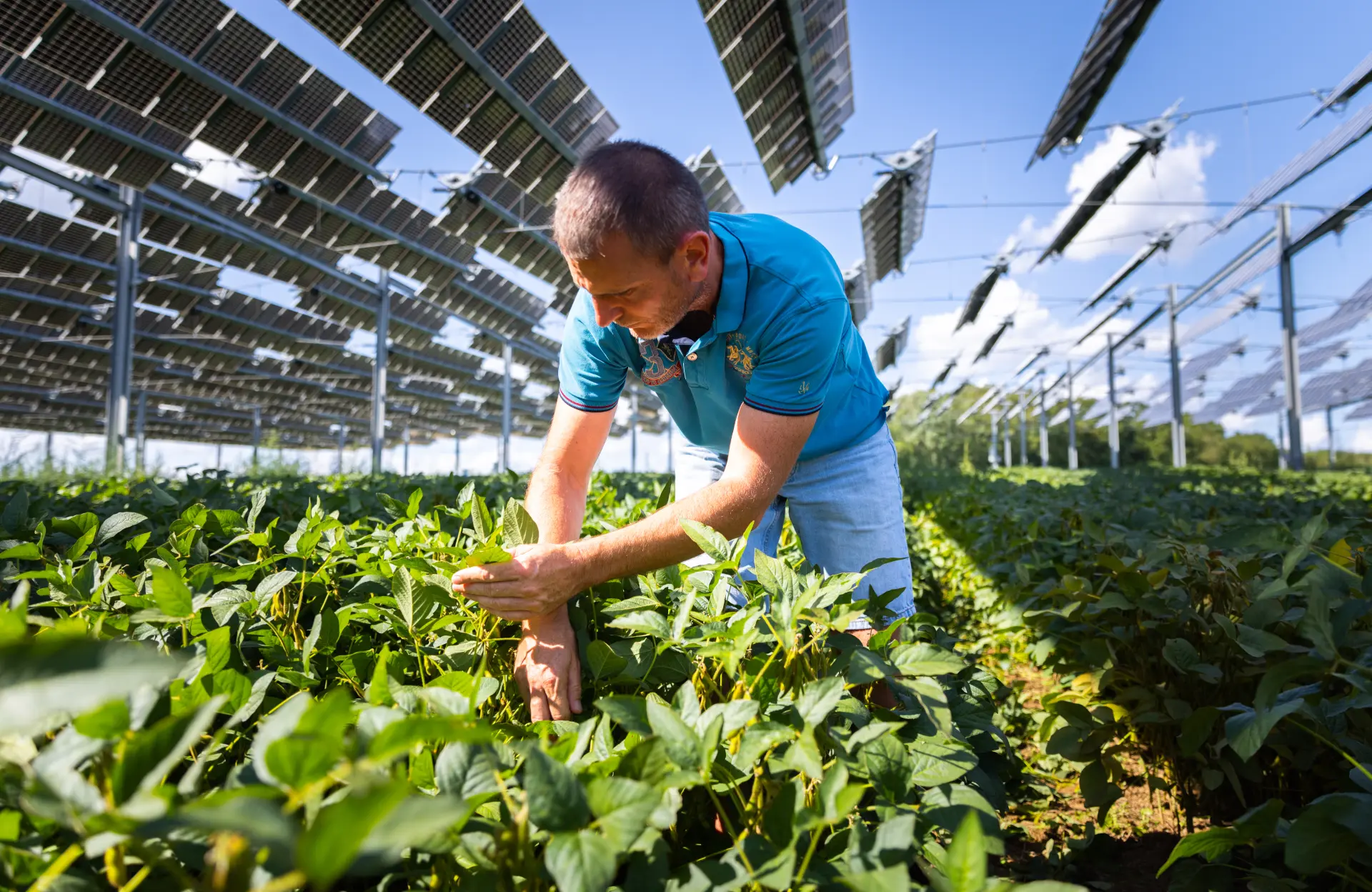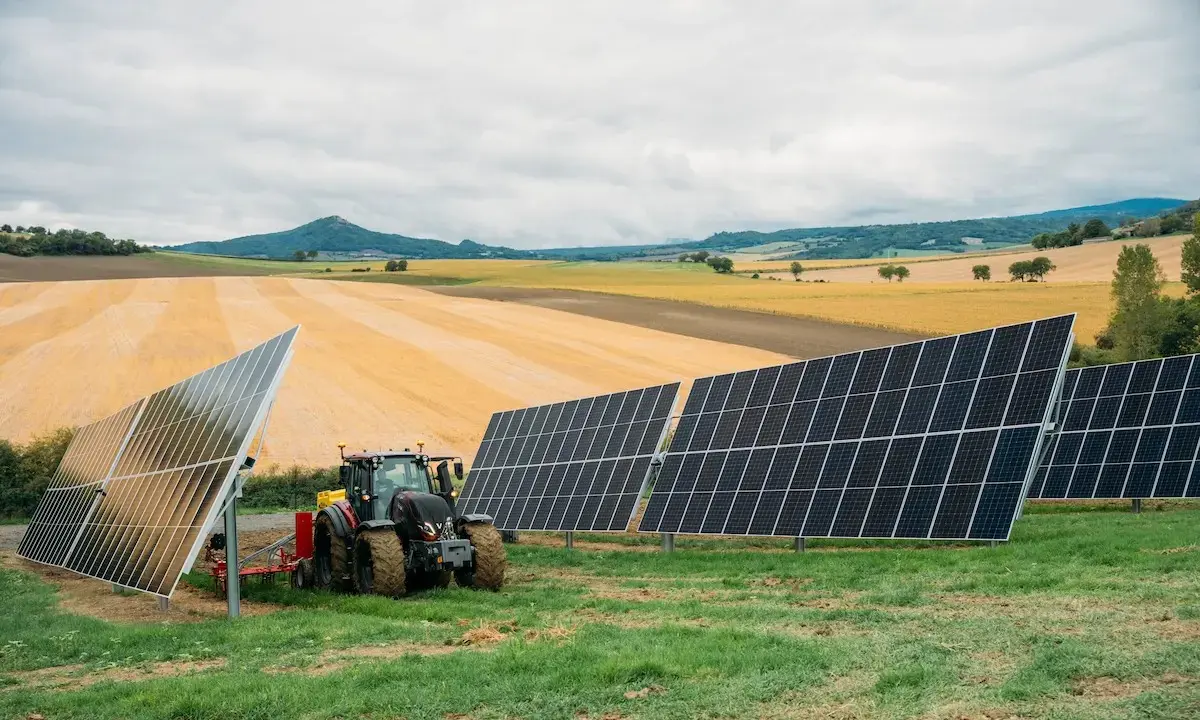Trusted energy at the service of our communities

We produce the least expensive energy in France. Our energy is carbon-free, renewable, unlimited, decentralized, non-relocatable and more than 95% recyclable, contributing to the fight against global warming and supporting the agricultural transition.
About
TSE is a French tech company and a reference in photovoltaics and agrivoltaics. As a local company, we develop and operate innovative solutions to produce the least expensive carbon-free electricity in the heart of our communities.
We are working with local stakeholders and the agricultural world to build a responsible and prosperous energy future for our communities, our industries and our country. Our solar farms generate enough power for approximately 241,000 people.

In recent years, agriculture has faced increasingly extreme weather. TSE has developed agrivoltaic systems to help farmers combat these climatic hazards.
Our agrivoltaic solutions

We design solar photovoltaic power plants adapted to the specificities of each type of land : degraded land, natural land, solar car parks...
Our
photovoltaics
solutions

We have developed different solutions for industrial companies to create carbon-free, energy-efficient and energy-competitive industrial and tertiary spaces.
Our solutions for industrial companies and local communities

Our presence In France


Nos projets
Let's talk about your project
TSE is committed

Key figures
270
2.5 GwC
500 MWc
241 000
Des questions ?
Photovoltaic panels capture the sun's radiation, then neutralize the electrons through their components and produce a direct electric current which is then transformed into alternating current by the inverters for common uses.
A solar power plant can be designed and built within 3 to 5 years.
A photovoltaic power plant is composed of various elements: solar panel arrays, a transformer and delivery station, a fire tank, outdoor fences and traffic lanes.
Our teams will first review your needs and agricultural practices with you, to offer you the most suitable solution. We will then conduct a study of your plots to verify compatibility in terms of topography, zoning, access, distance to the grid, etc.
Solar energy, qualified as green energy because it is not derived from fossil fuels, produces electricity that emits fewer greenhouse gases, remains at a stable price and secures a sustainable energy supply.

.webp)


















